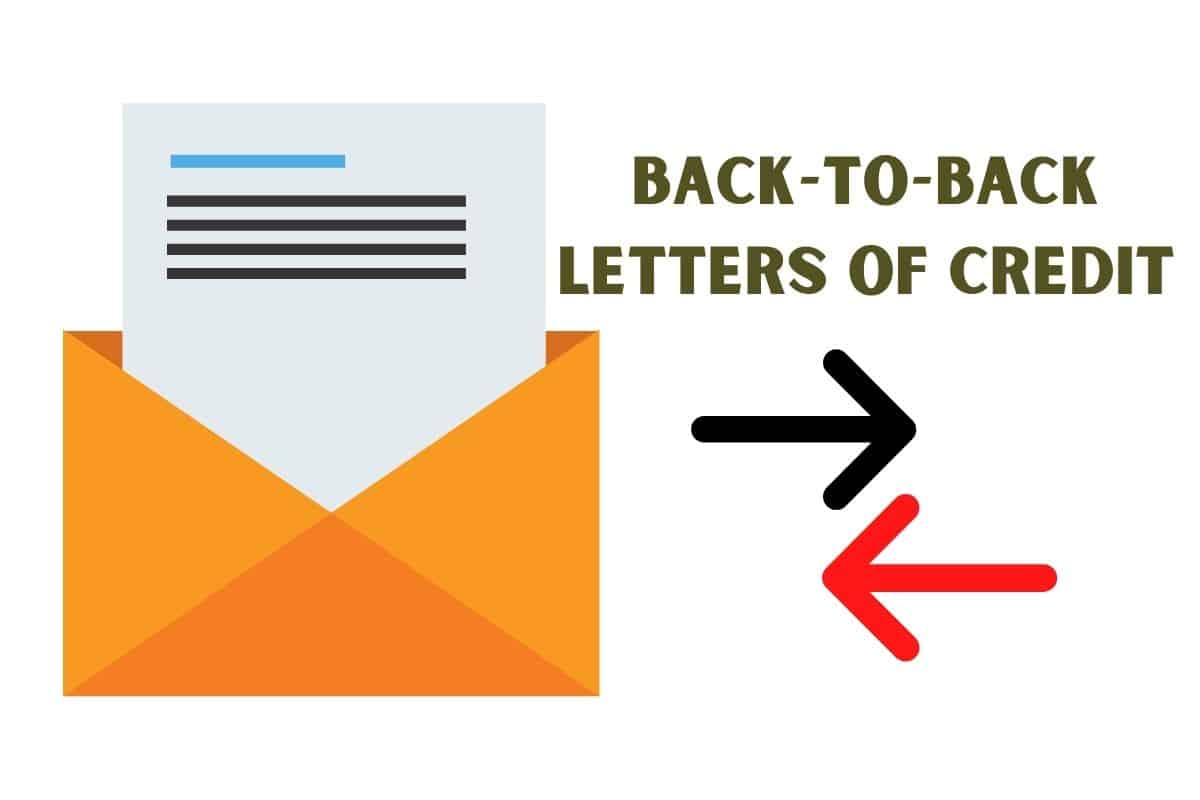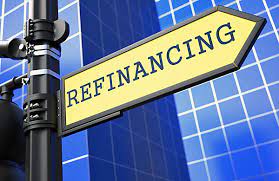You probably have heard of the phrase “Back-to-Back Letters of Credit” and you really want to get in-depth knowledge about it but don’t know who to ask. Good thing you’re here. We have highlighted some important details about Back-to-Back Letters of Credit, how it works, advantages, and alternatives.
What are Back-to-Back Letters of Credit?
Back-to-back letters of credit are double letters of credits (LoC) used together to finance a transaction. A back-to-back letter of credit is often used in transactions involving intermediaries between buyers and sellers, such as sellers, or when the seller has to buy the goods he sells to the supplier as a number sold to buyers.
The backend loan consists of two separate LoCs, one issued by the buyer’s bank for the intermediary and one issued by the broker-dealer for the broker. With the original LC from the buyer’s bank, the broker goes to his bank and issues a second LC and the seller wins.
Thus, the seller is guaranteed payment when the contract expires and submits the relevant documents to the intermediary bank. In some cases, the seller may not even know who the end buyer is.
How Do Back-to-Back Letters of Credit Work?
A letter of credit is a written promise from the bank that it will pay the seller (called the beneficiary) if the customer (the holder) does not.
For example, assume that Company A is a wholesaler. One of its customers, a large retailer, provides a note to Company A to assure Company A that it can pay for large orders of precious stones placed there.
To fulfill a large order, Company A has to buy a lot of raw materials from one of its suppliers. The supplier requests a certificate from Company A’s bank. Thanks to the receipt from the store, the Company A knows that it will receive a salary and can issue the certificate to the supplier.
Securities are more common in international stock exchanges when buyers or sellers do not know each other well or the laws and agreements that some stock exchanges may complicate.
Cont…
Banks often require insurance or financial security to issue a certificate to their owner. Banks also charge fees and the cost is usually a percentage of the size of the account.
Customs and international trade service procedures for documentary credit govern the use of securities used in international transactions. In the United States, a foreign exchange trading code governs securities used in domestic stock exchanges.
Debit cards are often a negotiable tool, meaning that the lending bank must pay the beneficiary or any bank designated by the beneficiary.
In some cases, the credit card can also be transferred, which means that you have the right to give an advantage to the other company (such as a parent or even a third party).
Because the two letters are interconnected and interdependent, it is a reliable loan. It is important to note that future accounts overlap. That is, the mission, control and other conditions are the same. In this regard, the first debt letter becomes the guarantee of the second debt.
Advantages of Back-to-Back Letters of Credit
Back to back letters of credit are a smart, easy, and fast way to secure foreign exchange between the two countries. The original letter of credit was issued by the bank in the client’s name, while the other letter was from the broker who had the support of the bank itself. Here are some of the key benefits of a credit card loan.
- Low Risks
- Assurance and Success
- Reliable
#1. Low Risks
Future repayment loans reduce the pressure on all participants in the exchange from buyer to the seller. It is also a variety of guarantees that the payment will be made by the bank in case their customers do not meet the contract period.
#2. Assurance and Success
Later loan applications are also effective and inexpensive as the bank takes care of the planning and other services for you. Customers can consult their dealers and market experts. You can even visit the bank’s website and read the notes, as they are a reliable source of information for users.
#3. Reliable
With the banks supporting the exchange, the deal has become more reliable and secure for merchants who have to accept payment. Papers are often used as a last resort when there is bad debt to the buyer
READ ALSO: 5 quick bad debt recovery strategies
Alternatives to a Back-to-Back Letter of Credit
#1. A Transferrable Letter of Credit
Once the invoice is issued, the transfer of one or part of the value of the loan to a third party or the so-called second beneficiary is allowed. In the example above, the beneficiary is a seller and is now able to transfer all or part of the value of the certificate to the actual manufacturer of the products and can do so unless he uses his own credit.
The lending bank, which is usually the lending bank or advisor, will primarily issue the transfer letter (TLC) and advise the second beneficiary. TLC will look like the original LC, with a few exceptions. If the original LC requires four documents – invoices, business invoices, package lists, and certificates of origin – the relocated LC contains the same documents and the same documents.
#2. An Assignment of Proceeds
Suppose we have a buyer, a broker, and a supplier. At the request of the broker, a buyer requests a letter of credit, but this time there is no mention that the letter of credit must be transferable. The letter of credit is issued and sent to the advising bank, who in turn advises the beneficiary, also known as a broker or intermediary.
The beneficiary knows that his supplier wants some kind of guarantee that he will be paid, but the beneficiary wants to maintain maximum control over the transaction. An income transfer could be the answer.
Upon receipt of the letter of credit, the beneficiary would approach their bank with the original letter of credit in hand and request that a specific value of the original letter of credit is assigned to the provider. For example, if the LC was issued for $ 50,000, the allocation request could be $ 35,000.
The bank will require the original letter of credit to be submitted along with the written request for the assignment. The bank needs the original LC in order to support the back of the LC indicating that an allocation has been made to the designated party and the value of the allocation.
Remember, most letters of credit are freely negotiable, which means that the beneficiary can present documents to any bank. By endorsing the LC, any bank that may receive documents will know that an assignment has been made.
Once the endorsement has been attended, the bank will issue a document or letter entitled Assignment of Income addressed, in this case, to the provider. The content of this document will indicate that an income transfer has been made in your favor with a declared value. It will also indicate that if and when the payment is made according to the letter of credit, the payment will be made automatically according to the assignment.
Now that the supplier is withholding the assignment of revenue, you can be assured that they will receive payment and deliver the merchandise to the intermediary/beneficiary. If everything goes according to plan, the beneficiary organizes the shipment, obtains the necessary documents to draw against the LC, presents these documents to the bank, and the bank makes the payment to both the beneficiary and the owner of the transfer of income.
Again, this may seem like the perfect solution for the buyer, broker/broker, and supplier, but could something go wrong with this approach? Unfortunately yes.
With Assignment in place, once the vendor delivers the merchandise to the broker / broker, the vendor loses control of the transaction. In the worst case, the supplier goes ahead and ships the goods to the buyer, but also contacts him to propose that he not use the LC as a payment method.
They might even suggest that instead of the LC, they would be happy to offer open account terms. They can propose that after the buyer has received the goods, they can make the payment by bank transfer.
The buyer, unaware that a revenue assignment has been issued, may be excited at the prospect of not having to pay their bank an LC examination fee and agree to the open account proposal.
Meanwhile, we have the provider sitting patiently waiting for payment. After two to three weeks, they may contact the bank to inquire about the status of the allowance payment only to learn that the documents against the letter of credit have not yet been submitted. The provider will be referred to the line in the income allocation in which the payment will be made if the payment is made according to the letter of credit.
The provider then tries to contact the broker/broker only to find that the phone has been disconnected and they appear to have left town. The provider’s payment outlook at the moment is not very good. For this same reason, suppliers or manufacturers can avoid this agreement.
How Can One Open Back-to-Back LC?
In order to open Back to Back LC, the following documents are required:
- Import Registration Certificate (IRC)
- Certificate of Taxpayer Identification Number (TIN)
- Proforma Invoice.
- Insurance Cover Note etc.
- Trade License.
- The Chamber of Commerce Membership Certificate.
What is the Difference Between a Back to Back LC and a Transferable LC?
At the time of issuance, the bank that is responsible for the LC needs to indicate that it is transferable in order for it to be valid. When this condition is met, and only then, can the recipient transfer the credit to a third party. In this particular procedure, there is just one LC involved. In the case of a back-to-back LC, the bank will issue the secondary LC based on the primary LC, which will serve as collateral in this scenario.
How Does One Obtain a Letter of Credit?
Many banks provide letters of credit, and you can obtain one by contacting a bank representative. Letters of credit will most likely be issued by banks with specialist international trade or commercial sections. If your bank does not provide letters of credit, it can most likely refer you to another institution that does.
When Should an Exporter Waive a Letter of Credit?
If the importer has a better negotiation position than the exporter and refuses to utilize a letter of credit, the exporter may be forced to forego the letter of credit.
What is the Cost of a Letter of Credit?
A letter of credit’s cost is determined by the bank that issues it. Typically, the fee is calculated as a percentage of the transaction amount. You can anticipate paying a few percentage points, but the exact fee will depend on your credit history and the bank in question.
Conclusion
Back-to-Back Letters of Credit LCs essentially replace the debts of two banks that provide buyers and intermediaries and thus help facilitate exchanges between parties that may be far apart and may not be able to verify the individual debt.
RELATED: What are the Types of Brokers and Brokering Services?






